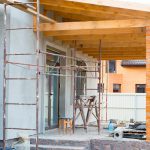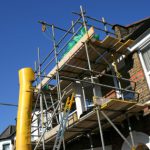Last updated on October 28th, 2019 at 05:14 pm.
There has been no shortage of publicity around the difficulties with illegal houses in Spain. There have been many sad cases that have hit the headlines of Spanish homes being demolished and with them, people’s dreams. There are stories behind each one of these cases.
Properties still exist that were built without the necessary planning permission. The original reason for this happening has been addressed and hopefully we should never see the same again. However, that doesn’t alter the fact that homes were built illegally and the demolition of Spanish houses was the result.
There were two main reasons for it happening:
- Properties built on non-urban land with a licence issued by the Town Hall but not agreed by the Andalucian government
- Properties built on non-urban land without a licence issued by the town hall.
In the first case it’s the Town Hall who are largely to blame along with the builder and developer who profited at the time. In the second scenario the Town Hall should still take responsibility as they let this happen unchecked. However, it’s the builder who is mostly to blame as they must have known that the property was illegal.
The situation now
There is some good news. Some properties have had their demolition orders suspended. However, this does not alter the fact that many more remain under threat leaving their owners at risk of having their Spanish home demolished. Some of these people are pensioners who have sold up all their assets to come and live in Spain.
Action is being taken against some of those who knowingly ignored the rules. Imprisonment for two years was recommended by the judge for one promoter for his part in misleading purchasers in Albox. However, this will come as only a small compensation to those affected. The situation is particularly uncertain where no license was issued at all. It is unlikely that in these cases demolition orders will be frozen.
Who’s to blame?
In some cases several people have been complicit. Certainly the promoters who were driven by the possibility of great financial gain have a lot to answer for. Urban land is much more expensive to buy than non-urban and money was made through breaking the rules.
However, the town halls also had a significant part in this. In some cases they issued invalid licences that had not been sanctioned by the authorities. Even where a license wasn’t applied for at all by the property developer they should have been monitoring their areas more closely and should have detected that illegal building was taking place.
What now?
Whoever is to blame, the fact remains that these properties are still illegal until a decision is made about what to do with them. The authorities might decide:
- to make them legal by changing the designation of the land to urban – costs would be incurred for owners who would need to pay towards making them official but at least the threat of demolition would be removed
- to provide some compensation to those affected until they might be reimbursed through the courts. This would alleviate the situation temporarily but would place a financial burden on the locality
There is also the concern that even if property owners take their grievances to court and win, they may not retrieve their investment. The judicial process is a lengthy and costly one. Although the developers might be found liable, by the time this happens they may have no money left and no assets to seize. Equally where the town hall is to blame, a succession of appeals may make the process even longer. Even taking years.
It is a very sad story, and one from which the authorities have learnt. It does not remove, however, the pain left from those mistakes made.
No comments yet
There are no comments on this post yet.






Leave a comment